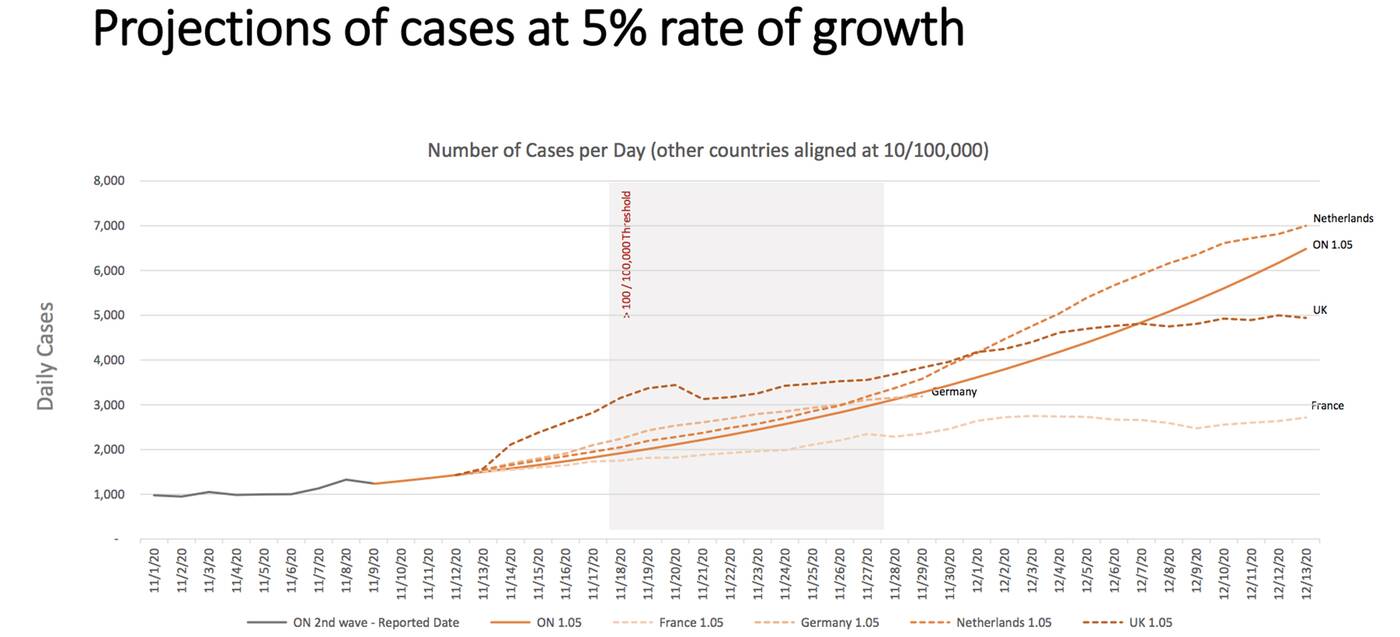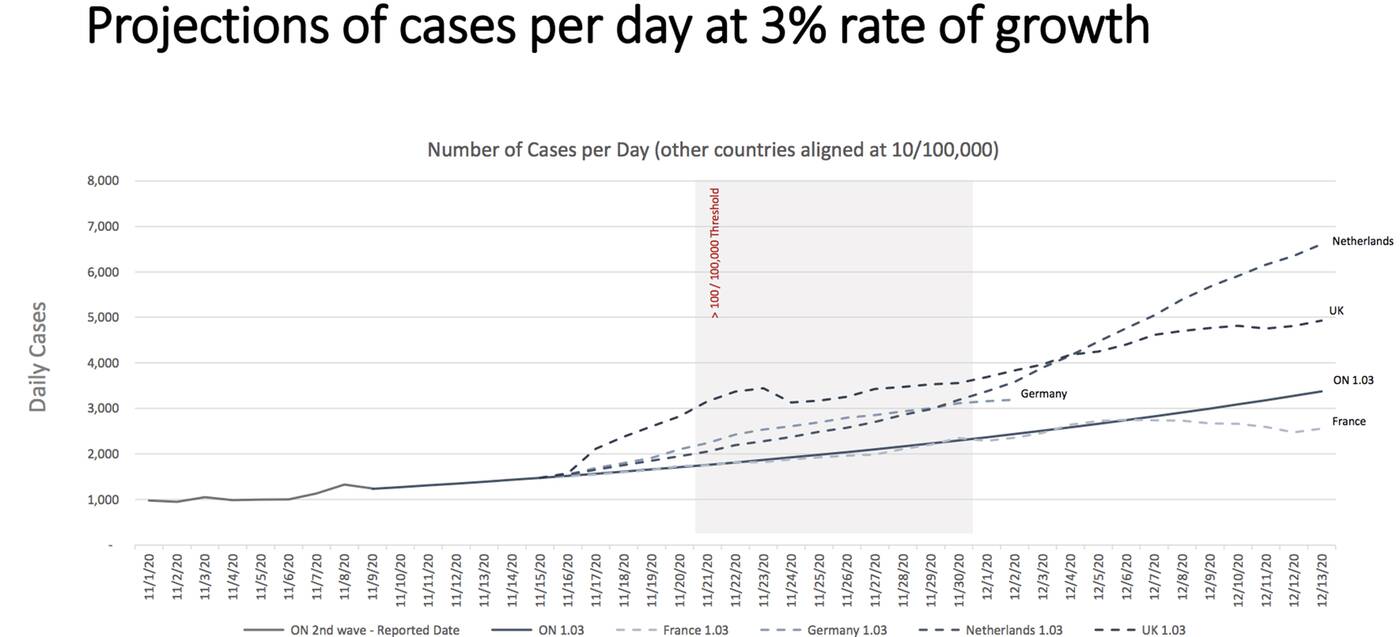
This is how bad COVID-19 could get in Ontario over the next month
Ontario keeps on hitting record highs for new COVID-19 infections per day despite fairly stringent lockdowns in the province's two hotspot regions, and new modelling data released by the government's top experts on Thursday has residents even more fearful of what the coming weeks could bring.
The short-term projections from the Ontario COVID-19 Science Advisory Table show that we could end up in a pretty dire situation if restrictions stay as they are, seeing around 6,500 daily new infections by the middle of next month assuming cases grow at a rate of five per cent. At a rate of three per cent, this number would be closer to 3,500 by the same time.
 Unfortunately, our growth rate in the past two weeks is already sitting at around four per cent — six per cent in the last three days alone — with 1,575 new cases today, the biggest increase we've seen in a single day to date.
Unfortunately, our growth rate in the past two weeks is already sitting at around four per cent — six per cent in the last three days alone — with 1,575 new cases today, the biggest increase we've seen in a single day to date.
The Table mentions in the report that if this growth rate does indeed hit 5 per cent, "our case numbers likely exceed several jurisdictions in Europe that are now in some form of lockdown," insinuating that we must consider locking things down further.
"If we continue on with the current level of restrictions, I would not expect to see any deviation from the current results — you would continue to see growth," the co-chair of the Table said at a press conference today.
"I do not believe there's a way that the [case rate] will change without action."
 Though the document indicates that current measures in Ontario have had at least "some effect" on spread, it also shows how other parts of the world, such as France and Germany, have still struggled to slow rising case numbers even after their most recent partial or full lockdowns.
Though the document indicates that current measures in Ontario have had at least "some effect" on spread, it also shows how other parts of the world, such as France and Germany, have still struggled to slow rising case numbers even after their most recent partial or full lockdowns.
More concerning than the projected case numbers for Ontario, perhaps, is the fact that the experts are predicting ICU occupancy to continue rising to surpass a key threshold of 150 within just two weeks, given our ICU admittance rate of 1.5 per cent of all COVID-19 patients.
The data shows this number hitting 400 ICU hospitalizations within six weeks, potentially overruning hospital capacity in some regions.
With the transmission setting unknown in 60 per cent of the province's recent cases — Toronto having the highest proportion of infections that have no known epidemiological link, meaning they are not from known outbreaks, direct contact with a patient or recent travel — enhanced restrictions on public settings may be one of the best and perhaps only ways to curb community spread, the experts say.
5 per cent growth the province could top 6,000 new infections daily by December. That would be four times today’s record level of 1,575 new COVID-19 cases. @fordnation @celliottability How many more of will have to die before you either step aside or LISTEN to expert advice?
— papillon4444, rabble-rousing crone 🇨🇦 🌈 🍎😷☮️ (@papillon4444) November 12, 2020
But, with countless businesses on the verge of or past irreparable financial ruin, industries and the economy at large floundering and the population's mental health worsening, implementing more stringent lockdown measures is not an easy choice to make — hence why Premier Doug Ford is opposed to a full shutdown.
"How do you deal with the mental health of people? It's easy for people to say 'just shut everything down,' when they're guaranteed a paycheque every week," Ford said at his daily media briefing today in defence of the province's new colour-coded reopening framework, which has drawn some criticism.
"Shut everything down is not the approach we're taking, we're taking a balanced approach."
We're all at risk of #COVID19 infection but we can control this if we're disciplined in how we spend our time, who we spend it with & take steps for self-protection. Please do whatever you can to starve this virus if its ability spread: https://t.co/71KjPp2NDw
— Dr. Eileen de Villa (@epdevilla) November 12, 2020
The province currently has 11,271 active cases of the virus among a population of 14.5 million, with an overall recovery rate of 83.8 per cent and a fatality rate of 3.7 per cent, with the vast majority of the province's COVID deaths in patients aged 80 and over.
Latest Videos
Latest Videos
Join the conversation Load comments






